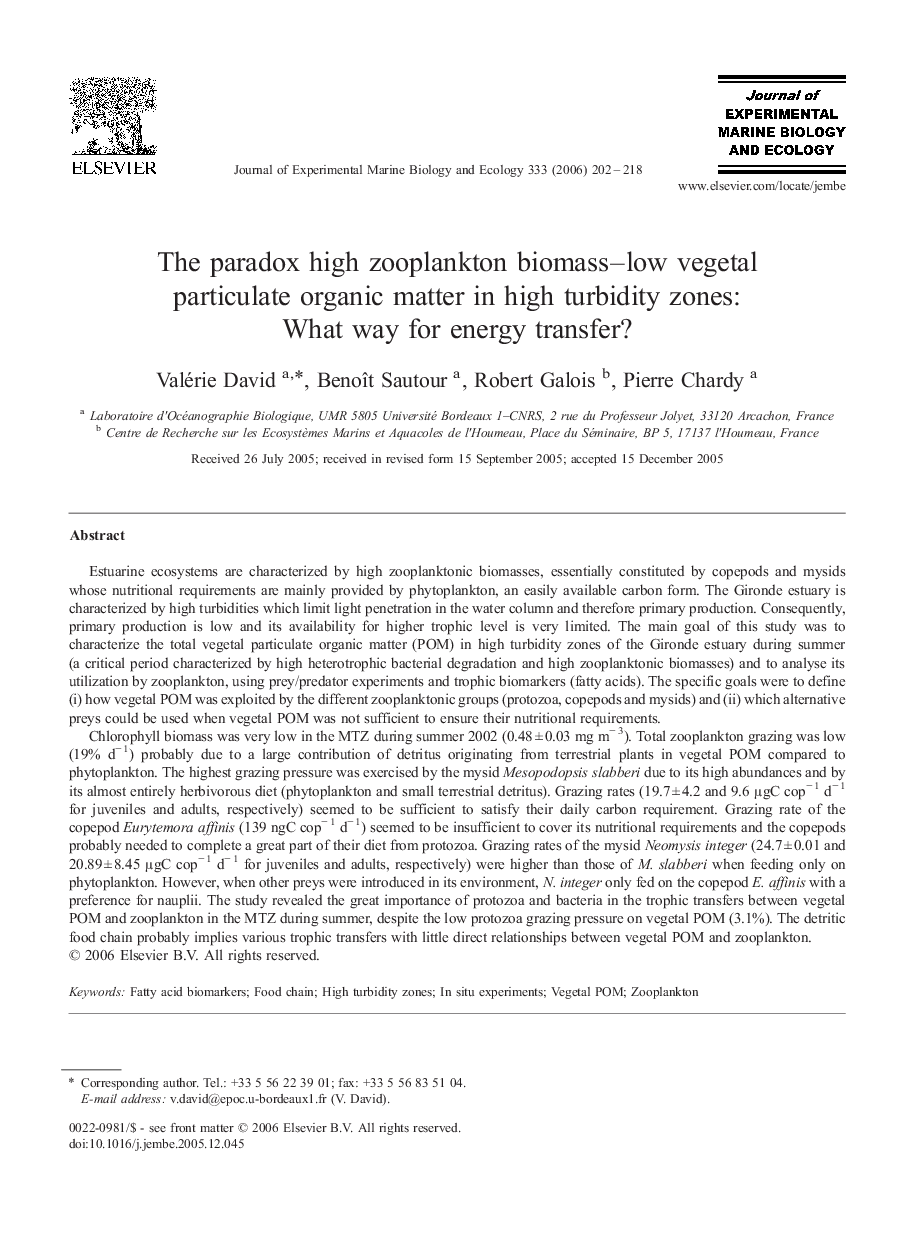| Article ID | Journal | Published Year | Pages | File Type |
|---|---|---|---|---|
| 4398115 | Journal of Experimental Marine Biology and Ecology | 2006 | 17 Pages |
Abstract
Chlorophyll biomass was very low in the MTZ during summer 2002 (0.48 ± 0.03 mg mâ 3). Total zooplankton grazing was low (19% dâ 1) probably due to a large contribution of detritus originating from terrestrial plants in vegetal POM compared to phytoplankton. The highest grazing pressure was exercised by the mysid Mesopodopsis slabberi due to its high abundances and by its almost entirely herbivorous diet (phytoplankton and small terrestrial detritus). Grazing rates (19.7 ± 4.2 and 9.6 μgC copâ 1 dâ 1 for juveniles and adults, respectively) seemed to be sufficient to satisfy their daily carbon requirement. Grazing rate of the copepod Eurytemora affinis (139 ngC copâ 1 dâ 1) seemed to be insufficient to cover its nutritional requirements and the copepods probably needed to complete a great part of their diet from protozoa. Grazing rates of the mysid Neomysis integer (24.7 ± 0.01 and 20.89 ± 8.45 μgC copâ 1 dâ 1 for juveniles and adults, respectively) were higher than those of M. slabberi when feeding only on phytoplankton. However, when other preys were introduced in its environment, N. integer only fed on the copepod E. affinis with a preference for nauplii. The study revealed the great importance of protozoa and bacteria in the trophic transfers between vegetal POM and zooplankton in the MTZ during summer, despite the low protozoa grazing pressure on vegetal POM (3.1%). The detritic food chain probably implies various trophic transfers with little direct relationships between vegetal POM and zooplankton.
Related Topics
Life Sciences
Agricultural and Biological Sciences
Aquatic Science
Authors
Valérie David, Benoît Sautour, Robert Galois, Pierre Chardy,
